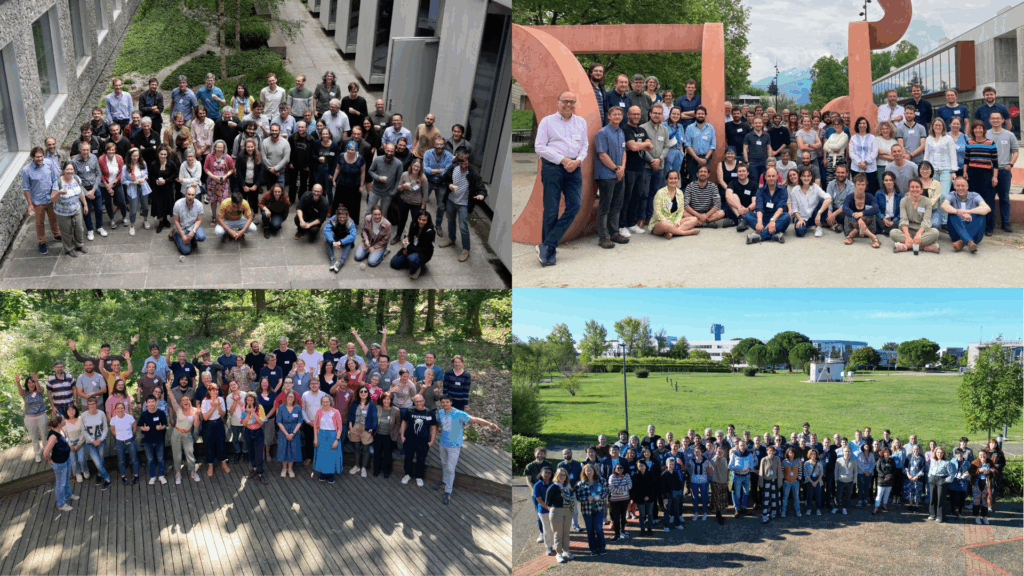On 30 November 2025, the ESM2025 project officially comes to an end. Launched in June 2021 and funded under the EU’s Horizon 2020 programme, ESM2025 set out to develop a new generation of European Earth System Models (ESMs) better suited to support ambitious mitigation and adaptation strategies in line with the Paris Agreement.
To mark the end of the project, we are releasing our final summary video, which showcases what we achieved together over four and a half years — scientifically and as a community.
From vision to results
ESM2025’s starting point was clear: current ESMs have been central to demonstrating that human activities are responsible for global warming, but further developments are needed to fully represent mitigation options and to understand how the Earth system responds to different emissions pathways.
The project has now delivered a suite of “mitigation-oriented” ESMs that place human emissions and land-use change at the centre of the modelling framework. These models are designed to help answer practical questions that matter for policy: How much warming can we still avoid? How do different mixes of emissions cuts and carbon dioxide removal play out in the Earth system? Which strategies remain robust when we account for uncertainty?
Key scientific advances
Over its lifetime, ESM2025 teams have:
Built emission-driven frameworks for CO₂ and CH₄
The project’s ESMs can now run simulations that start from emissions rather than prescribed greenhouse-gas concentrations, for both carbon dioxide and methane. This brings climate projections closer to the quantities that policy actually controls and strengthens the link between mitigation choices and physical climate outcomes.Improved representation of critical Earth system processes
Model developments span land carbon and nutrients, wildfires, land-to-ocean carbon and nutrient flows, ocean dynamics and biogeochemistry, and interactive coupling to ice-sheet models. Together, these improvements contribute to more consistent assessments of carbon budgets, sea-level rise, ecosystem change and wildfire risks.Strengthened the bridge between ESMs and IAMs
ESM2025 has co-developed an innovative framework to link Earth System Models and Integrated Assessment Models (IAMs). By making the representation of climate, land use and mitigation options more consistent across these tools, the project helps clarify how uncertainties propagate across the climate modelling framework and which insights are robust enough to inform long-term strategies.Supported policy-relevant questions for the Paris Agreement
Using coordinated simulations, reduced-complexity models and new diagnostics, the project has contributed evidence on remaining carbon budgets, the potential for temperature overshoot and subsequent decline, the role of land-based carbon dioxide removal, and the risks associated with crossing critical tipping elements such as ice sheet thaw.
These advances will feed into international efforts such as the upcoming CMIP7 cycle and future IPCC assessments, where European ESMs play a leading role.
Education, outreach and policy dialogue
ESM2025 was designed not only as a research project, but also as a platform for dialogue with society.
Under its outreach and education activities, the project has:
Developed climate education resources and engaged directly with teachers and students across Europe, helping to bring cutting-edge climate science into the classroom and fostering the development of climate projects at the local scale.
Provided professional development on climate education to high school teachers across europe.
Organised stakeholder forums and science-to-policy events, where researchers, representatives from European institutions and local stakeholders discussed priorities for climate policy and the wider society, including tracking real-world progress, assessing future risks and evaluating mitigation strategies under deep uncertainty.
These activities reflect a core principle of this project: climate research is done by people, for people. Opening up methods, assumptions and results is essential if we want climate knowledge to be both trusted and useful.
A collaborative European effort
ESM2025 brought together an interdisciplinary team of 21 partner institutions from seven European countries and Australia. The consortium includes leading groups in Earth system modelling, machine learning, reduced-complexity climate modelling, integrated assessment, education and science-policy communication.
Over the course of the project, this community has:
Co-designed model developments and coordinated simulations across several European ESMs.
Worked closely with early-career researchers, who played key roles in model development, analysis and research management.
Built new bridges between previously separate research communities, particularly between Earth system modellers and integrated assessment modellers.
The final video captures some of this human story: the workshops and general assemblies, the collaborations that formed across disciplines and countries, and the shared motivation to make climate science more relevant for society.
Looking ahead
While the ESM2025 project formally ends in November 2025, its scientific and educational legacy will continue. The models, tools and insights developed here will feed into upcoming CMIP simulations, inform future IPCC assessments, and support ongoing collaborations with related EU projects on climate extremes, tipping points and high-resolution Earth system modelling.
We invite you to:
Watch the final ESM2025 video above,
Explore our research highlights and policy briefings, and
Follow our social media posts over the coming weeks under the hashtag #ESM2025isOver.
Thank you to everyone who contributed to ESM2025 — from the scientists and students to the educators, policy partners and wider community who helped shape the questions we asked and the answers we could give.

